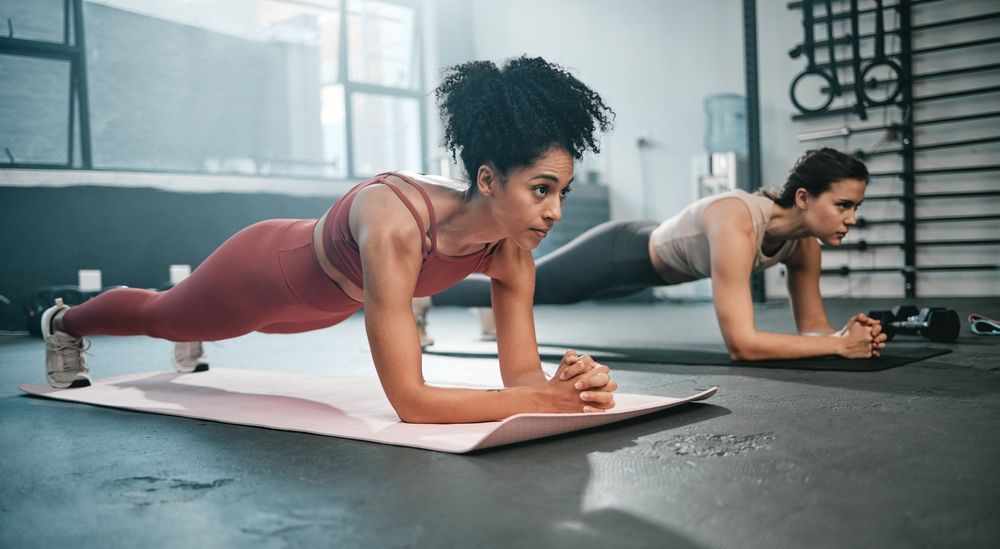
Planks: The Unsung Heroes of Bodyweight Workouts
Planks are one of the most versatile exercises you can do, offering a powerful way to strengthen your core, enhance your posture, and improve overall stability. Whether you're just starting your fitness journey or you're an experienced athlete, incorporating the right plank variations can challenge you and help you sculpt a stronger midsection.
But planks aren't just about getting a six-pack; they're about building a strong, stable foundation that supports every movement you make, from lifting weights to running or even performing everyday tasks. This exercise engages multiple muscle groups, including your shoulders, back, glutes, and legs, making it a true full-body workout. Plus, you can do planks anywhere, anytime, with no equipment needed—perfect for fitting into even the busiest of schedules.
Ready to Take Your Plank Routine to the Next Level? Keep reading to discover 10 of the best plank variations tailored for every fitness level, from beginners to seasoned pros. Whether you're just starting out or looking to push your limits, these variations are crafted to challenge you and help you achieve impressive results.
Why Planks are a Beneficial Bodyweight Exercise
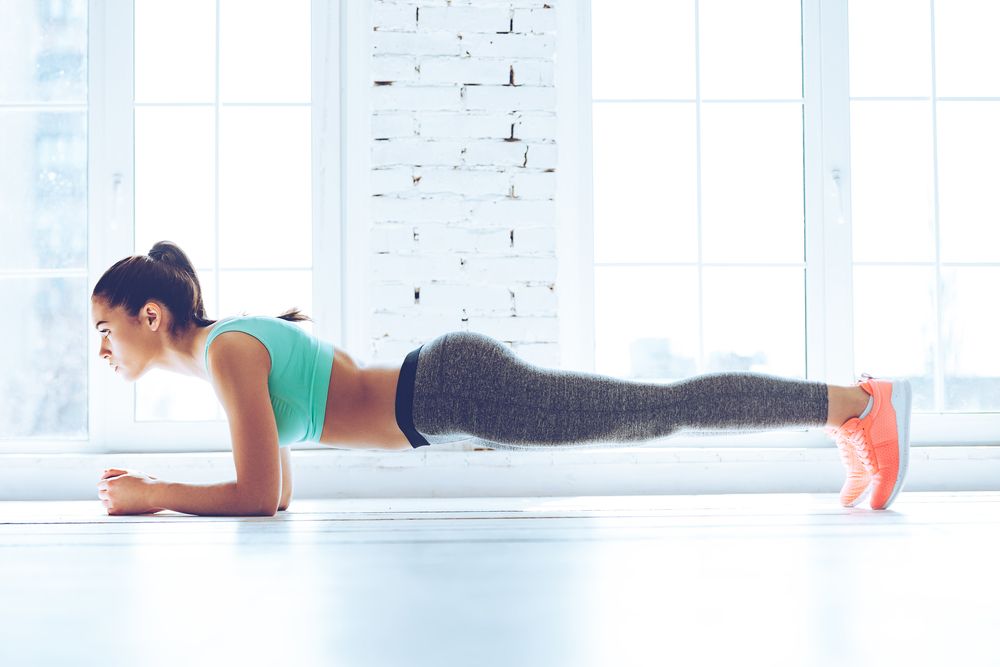
Planks: A Powerful Core Workout for All.
Planks are a highly effective option for strengthening your core. They engage a variety of muscle groups, including the rectus abdominis, transverse abdominis, obliques, lower back, and glutes. This comprehensive engagement not only helps sculpt your midsection but also enhances functional strength, which is vital for both everyday movements and athletic performance. Unlike crunches and sit-ups, planks place less strain on your spine and can even help alleviate lower back pain by improving overall core stability.
By strengthening the muscles that support your spine, planks also contribute to better posture. A strong core ensures proper spinal alignment, reducing the risk of back injuries and discomfort. Additionally, planks enhance your balance and coordination, which are crucial for both athletic activities and daily tasks.
One of the greatest benefits of planks is their versatility. You can modify them in countless ways to suit any fitness level, making planks an adaptable and inclusive exercise that can help you reach a wide range of fitness goals.
How to Choose the Right Plank Variation for You

Choosing the Right Plank Variation
Selecting the ideal plank variation depends on your fitness level, goals, and any physical limitations you might have. Beginners should start with basic variations to build foundational strength, while those at an intermediate level can add challenges like weights or dynamic movements. Advanced individuals should focus on variations that demand greater balance, strength, and coordination.
It's crucial to listen to your body and progress gradually to avoid injury while maximizing the benefits. Start with a variation that is challenging yet manageable, and once you can hold it with proper form for the recommended duration, move on to a more advanced level. The key is to maintain the position, actively engage your muscles, and ensure proper alignment throughout the exercise. Consulting a fitness professional can also offer personalized guidance and help ensure you're performing the exercises correctly.
10 Different Plank Variations and What Fitness Level Each is Most Beneficial For
Now, Let’s Get to the Good Stuff
Whether you're new to fitness or seeking a fresh challenge for your routine, there's a plank variation tailored just for you. Planks are incredibly versatile exercises that can be adjusted to fit any fitness level, helping you build strength, stability, and endurance in your core.
Below, I've outlined ten effective plank variations, categorized by beginner, intermediate, and advanced levels, so you can easily find the perfect fit for your workout goals.
Beginners
Just Starting Out with Workouts?
These plank variations are designed to help you build a strong foundation, focusing on your core while enhancing overall stability and strength. They’re ideal for beginners or those looking to strengthen their core before moving on to more challenging exercises.
Variation #1: Standard Plank
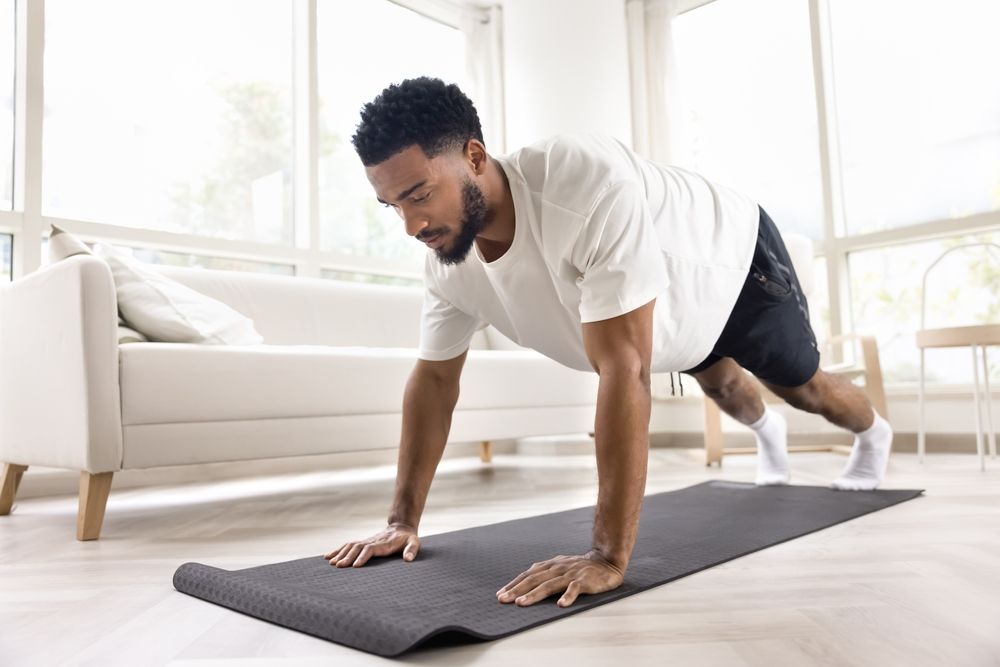
The Standard Plank: A Core Staple
The standard plank primarily targets the rectus abdominis, transverse abdominis, and obliques, while also engaging the shoulders, chest, and quads for a full-body workout. This foundational exercise is essential for building core stability, improving posture, and preparing your body for more advanced plank variations.
To perform a standard plank, begin on all fours with your hands directly under your shoulders and your knees under your hips. Step your feet back one at a time, forming a straight line from your head to your heels. Engage your core, keeping your hips level, and avoid letting your back sag or arch.
Aim for three sets of 20 to 30-second holds, gradually increasing the duration as your strength improves.
Variation #2: Side Plank
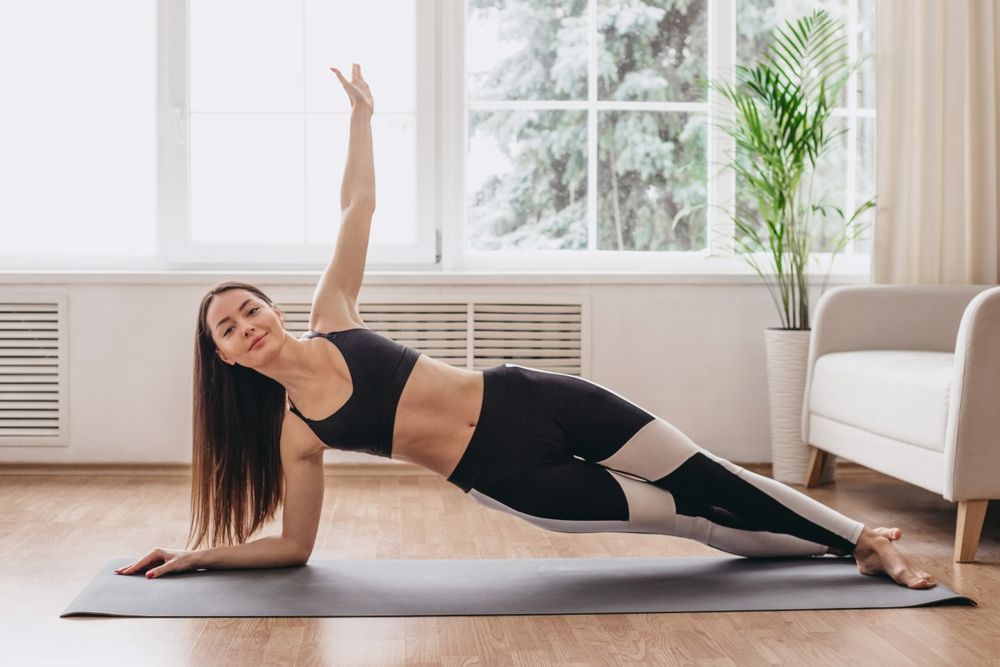
The Side Plank: Targeting Your Obliques and Beyond
The side plank is a powerful exercise that targets the obliques, glutes, hips, and shoulders. It’s particularly effective for enhancing lateral core stability and strength, both of which are essential for balance and rotational movements.
To perform a side plank, start by lying on your side with your legs extended and stacked on top of each other. Prop yourself up on your elbow, making sure your shoulder is directly above it. Lift your hips off the ground, creating a straight line from your head to your feet.
Aim to complete three sets of 20 to 30-second holds on each side, focusing on maintaining a straight body line throughout the exercise.
Variation #3: Plank with Shoulder Taps
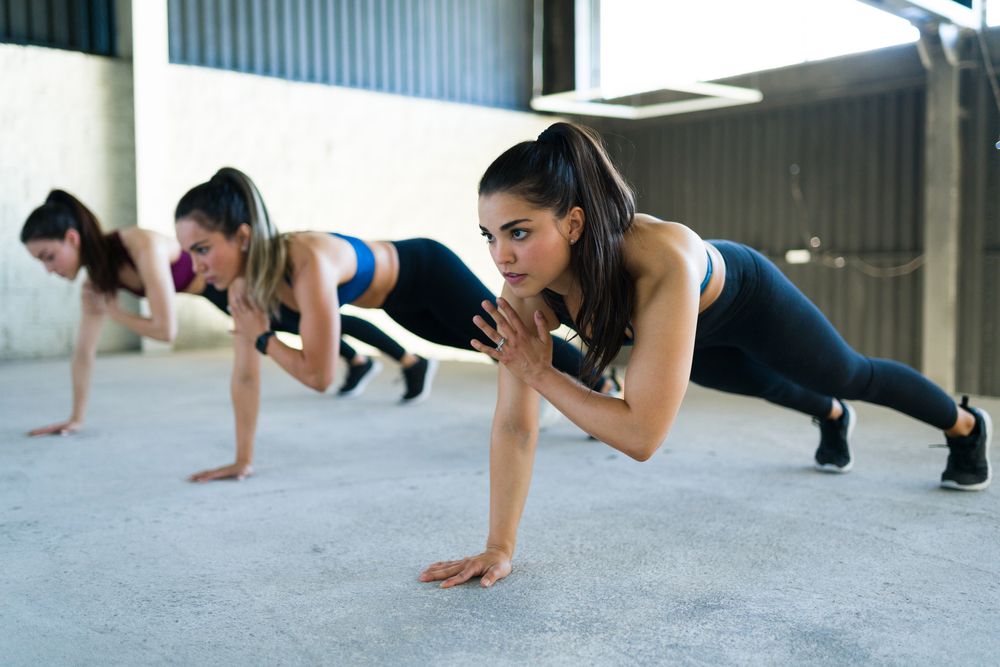
Plank with Shoulder Taps: Adding Instability for Greater Engagement
This variation not only engages the core but also places a strong emphasis on the obliques and shoulders while challenging your balance. The added element of instability requires greater core engagement and enhances shoulder stability.
To perform a plank with shoulder taps, start in a standard plank position. Lift your right hand to tap your left shoulder, ensuring that your hips remain stable and don’t shift. Return your hand to the floor, then repeat on the other side.
Aim for three sets of 10 to 20 taps per side, focusing on keeping your core tight and your hips steady.
Intermediate Level: Ready for a New Challenge?
If you’re looking to step up your game, these intermediate plank variations introduce new challenges that demand extra strength and stability. They’re perfect for those who have mastered the basics and want to further develop their core muscles and overall fitness.
Variation #4: Weighted Plank
Weighted Plank: Amplifying Core Strength and Endurance
The weighted plank takes core engagement to the next level, especially targeting the rectus abdominis and transverse abdominis. By adding resistance, this variation enhances muscle strength and endurance throughout your entire core.
To perform a weighted plank, get into a standard plank position. Have a partner carefully place a weight plate on your lower back, or opt for a weighted vest.
Aim for three sets of 30 to 45-second holds, maintaining proper form throughout.
Variation #5: Side Plank with Hip Dips
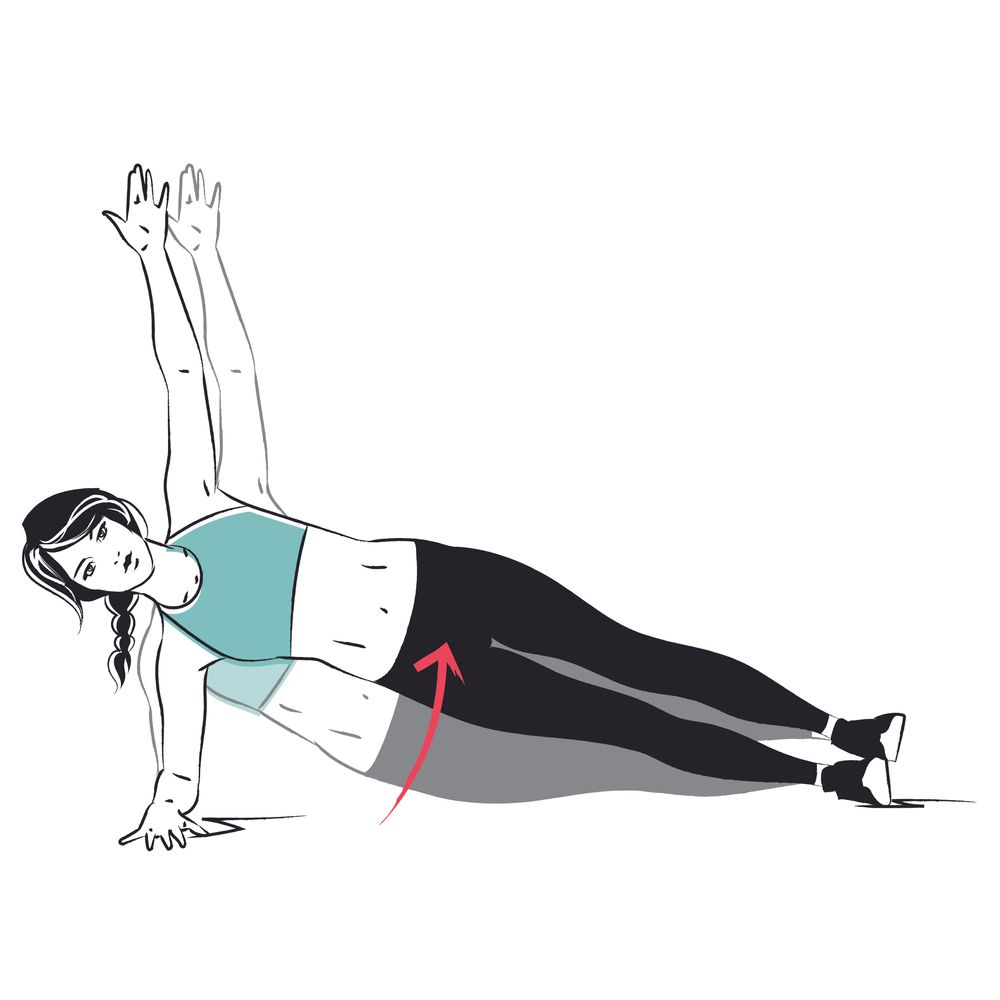
Side Plank with Hip Dips: Strengthening Obliques and Glutes
The side plank with hip dips is an excellent exercise for targeting the obliques, glutes, and hip abductors. This dynamic movement challenges your core while enhancing both strength and stability.
To perform a side plank with hip dips, begin in a side plank position. Lower your hip toward the floor, then lift it back to the starting position in a controlled manner.
Aim for three sets of 10 to 15 reps on each side, focusing on maintaining steady and controlled movements.
Variation #6: Plank with Pull-Through
Plank with Pull-Through: Boosting Core Stability with Rotational Strength
This variation intensifies core engagement, with a strong emphasis on the obliques and shoulders. By incorporating rotational movement and anti-rotational strength, it significantly enhances overall core stability.
To perform a plank with pull-through, start in a standard plank position with a dumbbell placed beside your right hand. Reach across with your left hand to grab the dumbbell and pull it through to your left side. Return your left hand to the floor and repeat the movement on the other side.
Aim for three sets of eight to 16 reps per side, focusing on keeping your hips stable throughout the exercise.
Advanced
Seeking the Ultimate Core Challenge?
These advanced variations are designed for those who are ready to push their limits. Requiring significant strength, balance, and coordination, they’re perfect for individuals with a solid foundation who want to take their core performance to the next level.
Variation #7: Lateral Plank Walk
Lateral Plank Walk: Full-Body Engagement with Added Intensity
The lateral plank walk activates the entire core, with an extra focus on the shoulders and hip abductors. This exercise not only boosts core stability and shoulder strength but also introduces a cardiovascular challenge.
To perform a lateral plank walk, begin in a standard plank position. Move your right hand and right foot to the side, then follow with your left hand and left foot, effectively "walking" laterally.
Aim for three sets of 20 to 30 seconds, taking three to four steps in one direction before reversing. Keep your core engaged and hips stable throughout the movement.
Variation #8: Extended Arm Plank
Extended Arm Plank: Elevating Core and Upper Body Strength
The extended arm plank takes core engagement to the next level, particularly targeting the rectus abdominis and transverse abdominis while adding extra emphasis on the shoulders and back. This variation challenges both core and upper body strength, enhancing overall endurance and stability.
To perform an extended arm plank, start in a standard plank position. Walk your hands forward a few inches, extending your arms and increasing the distance between your shoulders and hands.
Aim for three sets of 20 to 30-second holds, maintaining a tight core and a flat back throughout the exercise.
Variation #9: Single-arm Plank
Single-Arm Plank: Boosting Unilateral Strength and Stability
The single-arm plank emphasizes the obliques, shoulders, and back while incorporating a significant balance challenge. This variation enhances unilateral strength and stability, leading to improved overall core function.
To perform a single-arm plank, begin in a standard plank position. Lift one arm off the ground and extend it straight in front of you.
Aim for three sets of 10 to 15-second holds on each side, switching arms after each set. Keep your core steady and resist the urge to shift your hips as you maintain balance.
Variation #10: Side Plank with Cable Row
Side Plank with Cable Row: Combining Core Stability with Upper Body Strength
The side plank with cable row blends the oblique-targeting benefits of a side plank with a pulling motion that engages the back and shoulders. This variation introduces dynamic resistance, boosting core strength and coordination.
To perform a side plank with cable row, set up a cable machine with a low handle. Position yourself in a side plank with your body perpendicular to the machine. Grasp the handle with your top hand and perform a rowing motion, pulling the cable toward your torso.
Aim for three sets of 10 to 15 reps on each side, ensuring you maintain a strong plank position throughout the row.

